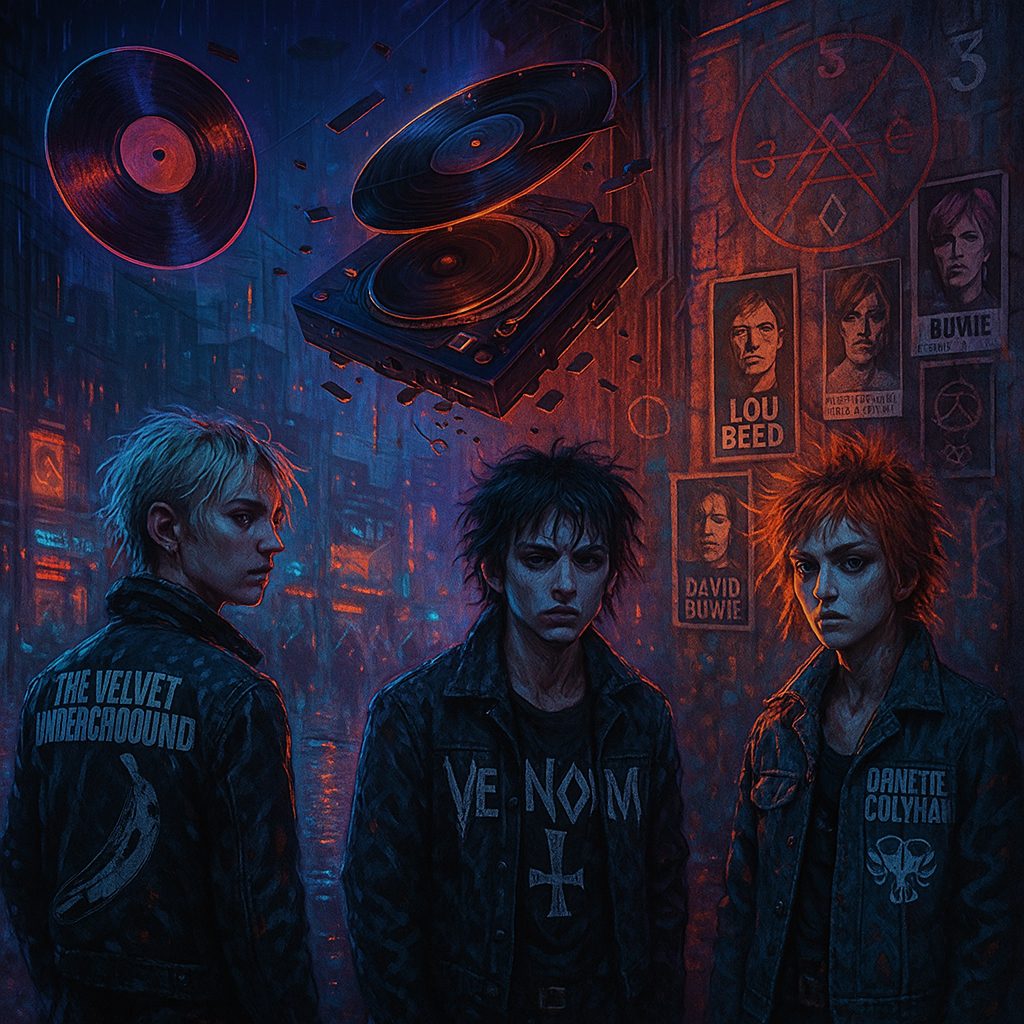Physical Graffiti is Led Zeppelin at their most expansive, most excessive, and—strangely—most intimate. It’s a double album of contradictions: brutal and delicate, ornate and guttural, deeply human and eerily mythic. Released in February 1975, it’s the gravitational center of Zeppelin’s discography—where all the threads converge, twist, and tighten. And in the light of its 50th anniversary, it feels even heavier, more spectral. A haunted mansion of sound.
If Houses of the Holy (1973) was their kaleidoscopic, sun-drenched record—joyous, funky, playful—Physical Graffiti is the night that follows the golden day. It’s Zeppelin’s Twilight of the Gods, where the light dims and the mysticism thickens. There’s swagger, yes, but also weariness. Victory with shadows clinging to it.
It opens with “Custard Pie,” all sleaze and slide, like the band is limping back from a barfight they won but didn’t enjoy. And then “The Rover”—an elegy disguised as an anthem. The whole album breathes like that. Dusty air. Lost kingdoms. Tangled wires.
It’s a New York record—recorded and partially assembled at the legendary Headley Grange, yes, but its soul lives in that East Village tenement on the cover, graffitied and spectral. That image, those fire escapes and empty windows, feels prophetic. Like the building is alive with riffs and ghosts.
Side three is where things get cosmic. “In the Light” feels like it’s beamed in from another plane—synth drones, whispered promises, and a melody that sounds like sunrise over a ruined temple. “Kashmir,” the obvious centerpiece, is where Zeppelin stop being a band and become a force of nature. Jimmy Page’s guitar becomes geography; Bonham is tectonic. It’s not a song—it’s a continent. And Plant? A prophet, crying out from the dunes.
What makes Physical Graffiti so wild and so 1975 is its scope. It’s not one album—it’s all of them. It compiles unreleased material from years past and glues it to newer, darker songs. It’s a Zeppelin retrospective disguised as a forward leap. You can feel the Houses shine in “Trampled Under Foot,” but you also feel the ancient, creaking menace of Presence starting to rise. They’re time-traveling through their own mythos.
In the context of the 1975 Series, this is the epic. The counterbalance to Lou Reed’s Metal Machine Music—where Lou strips everything away to let the noise take over, Zeppelin build cathedrals of tone, overdub, reverb, and presence. One is pure negation, the other pure construction.
And now, fifty years on, Physical Graffiti stands as both a document of Zeppelin’s peak and the beginning of their descent. The years ahead would be turbulent. Tragic. But in ‘75, they were still gods—tired, maybe, slightly cracked, but untouchable.
So light a candle. Put on “Ten Years Gone.” Let it play loud. That’s not just a love song—that’s memory burning in analog.

No comments:
Post a Comment